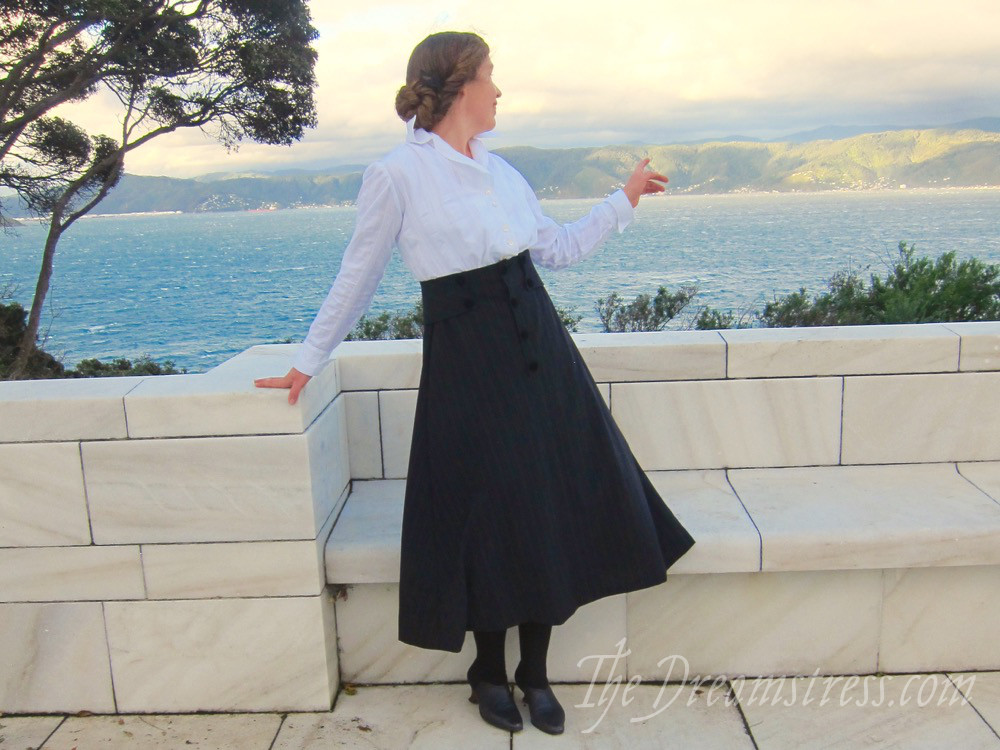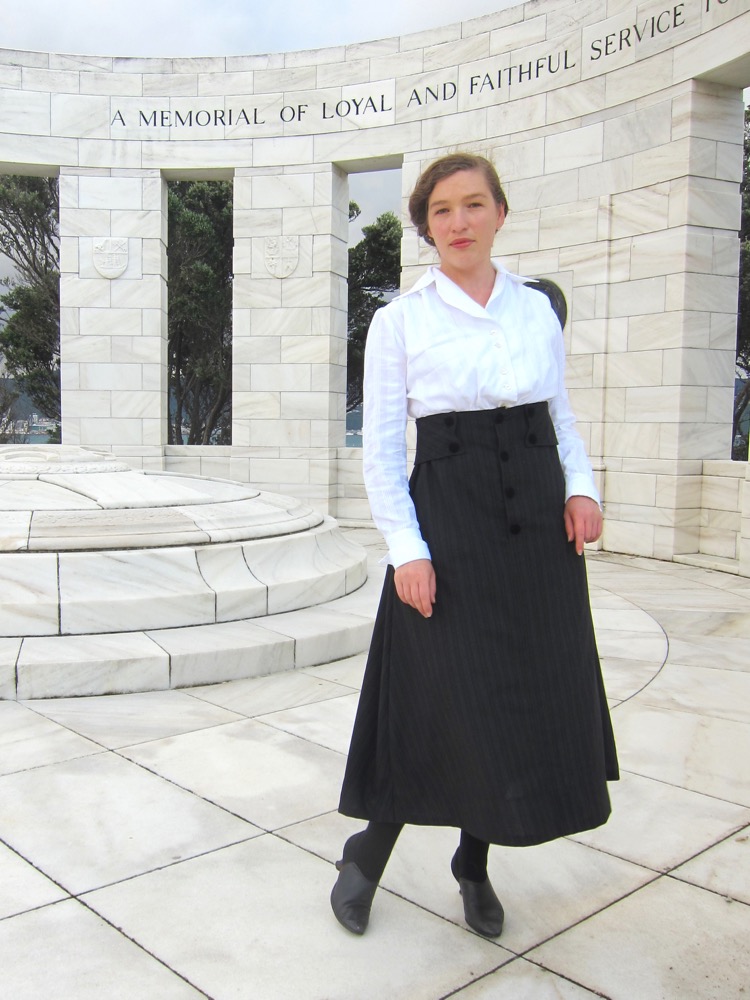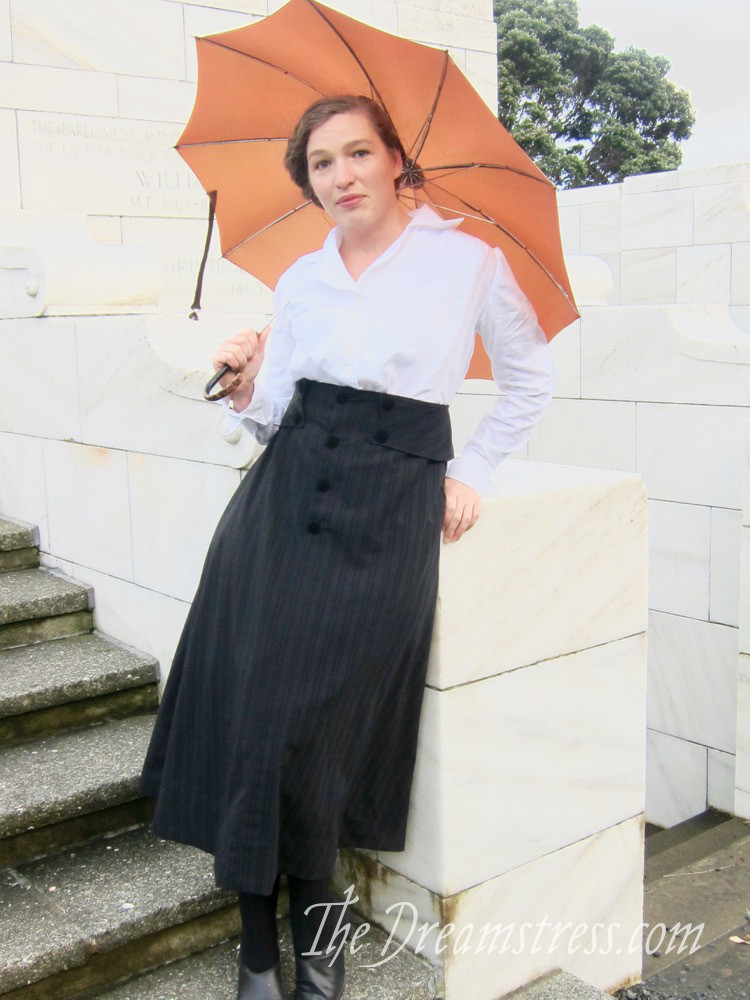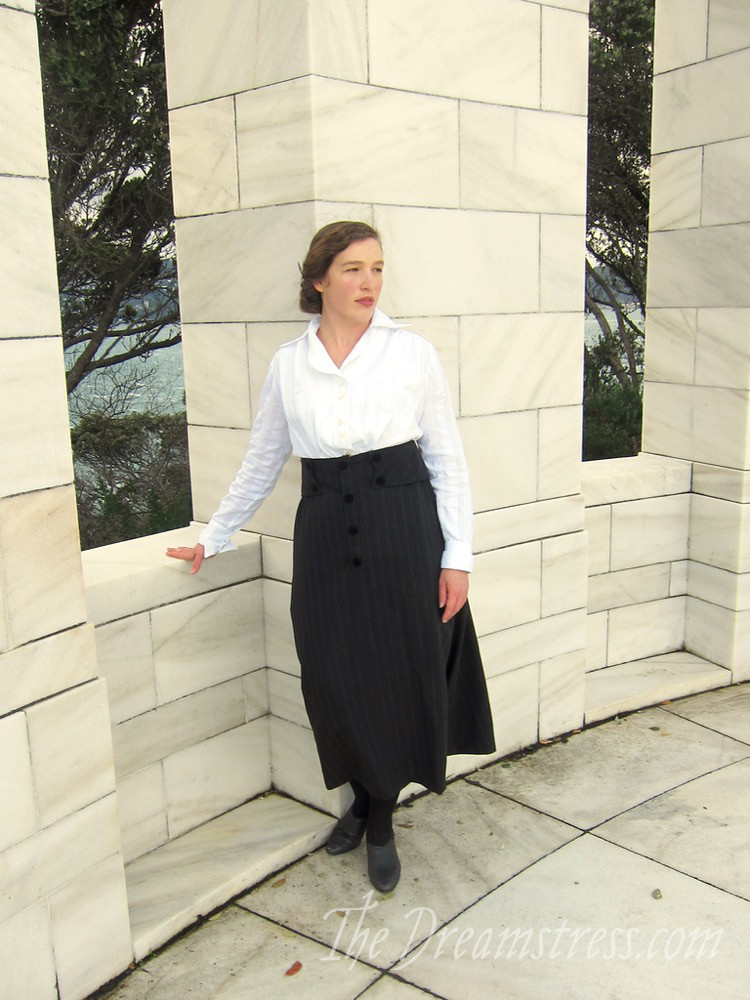April 25, Anzac Day, honouring anyone who has served in New Zealand’s armed forces, is probably New Zealand’s most widely commemorated holiday.
Waitangi Day is just awkward and slightly anger or guilt inducing. Almost everyone does something for Christmas, but New Zealand is a mainly secular nation, and few people really celebrate or commemorate it. Boxing Day is an excuse for sales, Guy Fawkes an excuse for fireworks, and New Years an excuse to get drunk (or set off fireworks – hopefully not both!). Easter is just a really awesomely long weekend – with the benefit or drawback of closed shops, depending on your views.
But Anzac Day is marked by almost everyone I know, regardless of their religion, politics, ethnicity, or age. Every news presenter, shop assistant, and person on the street wears a poppy, and almost everyone I know has, at least once, gotten up to go to the dawn service, if they don’t make an annual event of it. Sporting events in New Zealand and Australia have moments of silence before the game, and often play the national anthems of both countries – even when it is two home teams.
This year Anzac Day was a bigger event than ever, because it’s the 100th anniversary of the day the Australia and New Zealand Army Corps (ANZAC) landed on the Gallipoli peninsula to try to capture it from the Ottoman Empire. In 1915 New Zealand had been a Dominion for less than a decade, and Australia for just over a decade, and both countries were keen to prove their Britishness. William Massey, then Prime Minister of New Zealand told England “All we are and all we have is at the disposal of the British Government.”
Almost 3,000 Kiwi men (out of a population of just over a million in 1915), and 8,000 Australian men lost their lives in just one month of the Gallipoli Campaign. Overall, approximately 18,000 Kiwis would die in the war, and a further 40,000 would be wounded.
The Gallipoli campaign, and the entirety of WWI, were hugely influential in shaping New Zealand’s national identity and history. Not only did New Zealand participate in major global politics on a large scale as a country for the first time, but the country lost a whole generation of young men.
And this is where I struggle with Anzac Day ever so slightly. It’s been so long since the war, and so long since New Zealand officially participated in a war (participation in Afghanistan being covered by euphemisms like ‘training’ and ‘peacekeeping’), that too many people have forgotten how horrible and dumb it was. Anzac Day memorials and mentions sometimes (emphasis on the sometimes – as in ‘occasionally’, as in ‘definitely not the norm, but a very small percentage’) stray from commemoration to celebration and glorification. There is nothing there to celebrate for me. Even WWII, and other wars that were not illogical and pointless like WWI, were not glorious.
Just as bad, people who point out the stupidity of WWI, or the utter waste of human life, are accused of being unpatriotic (or worse). As soon as we fail to allow dissenting viewpoints, we’re falling into the exact group that we claim we send our soldiers to fight against.
What did we send our soldiers to fight for in World War I?
Thousands of men, barely more than boys most of them, went off overseas on promises of adventure and glory. They were told it would be ‘over by Christmas’ and were fed propaganda of German atrocities in Belgium to give their fight the guise of righteousness. They were told it was in service to their country and empire. Some of them were good men, some average, some bad. Some of them had never left their small corner of New Zealand before, and there were even soldiers from Pacific Islands like Niue and the Cooks who had never worn shoes before their army issued boots. And they all died.
Some of them were heroes in that they saved the lives of their comrades, or even their enemies, but there was nothing heroic about the war itself. War is not heroic, and WWI was a particularly dumb war. It was a war sparked by extreme nationalism, an arms race, imperialism, and machismo. In WWI in particular, I cannot agree that all those boys ‘gave their lives so we could be free’. They gave their lives so the powers that were could try to stay the powers that they were.
That doesn’t make their loss any less terrible. Whether they joined for patriotism, adventure, duty, peer pressure or the absolute conviction that they were doing the right thing and helping the world, when they died, it was a tragedy.
But I do not think it should be glorified.
As Jolley’s poem points out: “… our glory lies only in life as it’s lived – / Never in death and the dying. / The cenotaph knows the truth: / Its very own legend is lying.”
I think the best way we can honour them is to do everything to make sure it doesn’t happen again. That we never again hurl an entire generation to their deaths to settle an argument that 100 years on, we still can’t agree what it was actually about, or why it happened.
So for Anzac weekend, I try to honour the past in different ways, and spend my energy improving the world a little bit – sometimes in odd ways.
On Saturday (Anzac Day), we worked on painting the outside of our house, and tidying the inside. Our house was built in the early 1920s, and there were almost certainly veterans among the builders who constructed it, and perhaps the original owner was also a veteran.
Taking care of their tangible, lasting legacy: a building that has sheltered people and kept them warm and safe for close to a century, so it can continue to do so for another century, seems a very fitting tribute.
On the Monday holiday I did a little living history research, and tried to come to a closer understanding of the lives of the women who were left in New Zealand to carry on during the war. I put on my 1910s combinations and corset, stockings and shoes, two petticoats, and my just finished Wearing History 1916 skirt, and blouse (more on that later), and my 7 year stitch apron (slightly too modern, but the overall shape is still very close to a 1910s apron).
And then I did the laundry and made the beds, swept the house, dusted, and cooked meals.
Thanks to a modern washing machine and stove, that job was significantly easier for me than it would have been for my 1916 counterpart, but it still gave me a really interesting insight into what it was like to do that sort of work in the clothes of the era.
I’ll write an entire post about doing the housework in 1910s clothes as this one is too long, and covering too much ground.
To finish off the day, Mr D and I made the trek to the Massey Memorial to take photographs of my outfit. It’s a bit ironic, as Massey was the Prime Minister who was so keen to offer England assistance in a far-flung war. On the other hand, he was also known for working for better conditions for the soldiers who were serving.
You can really see the wartime influence in the 1916 silhouette. The raised hemlines (as short as hemlines would be in the vast majority of ’20s frocks) and fuller skirts make walking and working much easier than the longer, slimmer 1913-and earlier skirts.
The blouse and skirt combination, ubiquitous in photographs of New Zealand women in the war years, is also incredibly practical. The blouses are washable, and with a half a dozen of them a woman would have a complete wardrobe for every day of the week.
It’s not as well known as the shortages and rationing of WWII, but there were also clothing shortages in WWI. They were particularly dire in Europe, but New Zealand felt the run-on effects. One of the particular shortages was in dye. Germany had been such a major dye producer in the years before the war that the war left certain shades in very short supply. So practical suits in dull browns and blacks became common, and the vivid, exotic shades that characterised pre-war fashion were replaced by muted pastels in wartime frocks.
My fabric is a wool-rayon blend. Rayon (viscose) was available in New Zealand from 1911. Wool-viscose blends were used during the war, because so much wool was being used for the military that there were civilian shortages.
The Challenge: #4 War & Peace
Fabric: 1.2m of black and charcoal striped wool-viscose blend, found in the Fabric Warehouse $5 bin.
Pattern: Wearing History’s 1916 skirt pattern
Year: 1916
Notions: cotton thread (really old stuff – possibly as old as the pattern!), vintage velvet covered buttons from my Grandmother, horsehair interfacing, silk organza interfacing, vintage belting, hooks and loops.
How historically accurate is it?: I’m not certain about the use of velvet buttons on a 1910s skirt, but other than that the materials and techniques are period perfect, so 95%.
Hours to complete: 6 or so — this is an advanced pattern, and figuring out the interior belt was complicated.
First worn: Thur April 16, by a model, at the Museum of Wellington City & Sea ‘Home Front’ talk, and then again Mon 27 April, for cooking, cleaning, and a photoshoot.
Total cost: Under $10 — the fabric I picked up for $5, and the silk organza was also from the $5 bin (and I only used a fraction of it), plus $2 for hooks, $1 for thread, and another $1 worth of horsehair interfacing (thrifted).
To end, a photo where I actually smile, as this has been a quite sombre and serious post:







What an insightful post. I agree with most of your sentiments. As you say, the point of ANZAC Day is to commemorate the occasion (not celebrate) “lest we forget” the atrocities of war. The last ANZAC, Alec Campbell, pleaded on his deathbed, “For God’s sake, don’t glorify Gallipoli — it was a terrible fiasco, a total failure and best forgotten.” Unfortunately I’m not entirely sure we’ve learnt this lesson.
As an Australian, what saddens me most is seeing my fellow countrymen camp out at Gallipoli and treat the site with utter disrespect. They essentially have a huge party/booze up there and leave their rubbish behind. I can’t think of a much greater disrespect.
Thanks so much for sharing your perspective as an Australian. You’re absolutely right about Lest We Forget. Sometimes I hear ‘Lest We Forget’ used as ‘Lest We Forget the heroes who gave their lives that we could be free’ or ‘Lest We Forget our Glorious Dead’. It really needs to be clear what we aren’t forgetting. I’ve never heard the Alec Campbell quote, but that’s very telling.
The stories of drunken partying and carnival atmospheres at Gallipoli have been in the news here too. It’s really terrible.
I agree with you completely. I live in Canberra, Australia, right near the War Memorial. There has been ANZAC-ery all year, with people celebrating the “courage” and “spirit” of that terrible day in Gallipoli. It makes me a bit sick. Woolworths even ran a “fresh in our memories” campaign about their bread (which was cancelled due to public outcry).
Anyway, this week marks the centennial of something much nicer too – the first International Womens’ Congress in the Hague. They founded the Womens International League for Peace and Freedom 100 years ago! Here right now we’re having a Festival for Peace to commemorate this. I’m playing in a concert which tells the story and it’s so uplifting and wonderful. So hopefully, some good can come from war.
I like your skirt too 🙂
Oh, that is a much nicer centenary! Thank you so much for bringing it to my attention! It was needed then, and it’s needed now. The Festival and concert sound lovely! A great thing to commemorate.
The Woolworths campaign made headlines here. A terrible example of a company trying to capitalise and profit off of something entirely inappropriate. Shameful.
Totally agree about the ‘glorification’ that goes on. The whole thing was a monument of shonky ideas, mismanagement, snobbery and sheer disaster. It should be held up as one of the world’s great examples of how not to do things.
The skirt looks great. I think velvet buttons are fine – every woman in my family made her own clothes, and little touches of individuality are apparent in the photos we have of them. I was taught by my mother and grandmother and aunts that every garment should be individual to the wearer, so that even if you bought something you changed some detail to make it specifically yours. I still do it – change the buttons, alter hems, take in a bit or let out a bit,add an embroidered detail – whatever I feel like. So velvet buttons are not going to cause the sky to fall!
Agree entirely. I think we need to acknowledge those who died, without glorifying the war or loosing sight of what a stupid thing they died for.
Little touches of individuality I definitely agree with, but actually making velvet buttons is quite tricky, and because I can’t think of any examples of then pre-1950s, it’s possible they didn’t exist. But I’m quite OK with them, and with how historical the skirt is – I just like to acknowledge that they may not be perfectly period, for anyone doing very precise research!
Thank you for this post. Thank you. Thank you.
You’re most welcome! I am particularly honoured that you approve.
We are in full agreement about the waste that is war, the motivations in starting it, and in the distressing over-use of the word ‘hero’. Every soldier was not a hero. And the ones I knew (WWII) found the glorification of war most distressing. My feelings are mostly those of anger and regret. Anger at the lives lost, for nothing, and anger and regret at the thought of how different so many countries would have been if that generation had not be damaged, and deep distress for the families, mine included. So many great uncles.
So cherishing a home, and imagining a day in the life. Very good things to do. The skirt is a fine and useful garment.
You’re absolutely right about the lasting effects, and the damage and distress. Your family, I think, was hit particularly hard. And its so, so telling that most veterans DO NOT want the war glorified. I think we’re only starting to do it because we’re so far away – but that’s a dangerous slope.
It’s great to read this – I too have been feeling pretty uncomfortable about the whole thing as there seems to be a significant blurring between remembering the falling and getting all rosey tinted about the whys and wherefores. At a time when our P.M. is sending young kiwi soldiers to be involved in a war that has nothing to do with us and our freedom, it seems that while we remember past wars, we rarely remember how they came about and learn not to do that again. Lest we Forget indeed.
War is almost always about greed. And old men send the young to do their dirty work for them. It disgusts me to my very core.
Your skirt is beautiful. I love how you spent the day off. Very apt. I spent it playing with sequins, which is my idea of heaven. I am not sure I can tie this back to ANZAC except perhaps that I can imagine Constance entertaining troops back in the day!
I’m so relieved I’m not the only one. I sometimes feel strange speaking up about this, because I’m not NZ born, but it has been getting dangerously close to glorification.
Sequins may not be quite as on-theme, but it’s still an excellent way to spend the day!
Thankyou. You are a thoughtful and insightful lady. The skirt is fab and I love the velvet buttons.
Thank you! On both counts!
Beautiful as always ! I love reading your posts and the pictures are delight for the eyes !!
A spot-on look for the period. I’ve never liked this look because the high waist gives a rather odd appearance, but it’s what is seen in period catalogs. Well done!
I disagree with you on the morality of war – war can be heroic when done to free an enslaved people. Fighting against Boko Haram is heroic – going against those who truly want nothing more than to wipe you and your relatives from the face of the earth is heroic. Going against those that believe you should not be educated or be allowed outside of your home – ever- because of your gender or social status is heroic. Are there ways to do this on an individual level other than using guns – yes- but not a group or nation-state level.
The skirt is lovely but I’d rather keep the politics out of sewing.
I did not say that war can not be heroic – in fact, I explicitly mention that WWII was not pointless.
I don’t think you can keep the politics out of sewing – or anything else. History and world affairs influence what we wear, and talking about that it important. What you are wearing at this very moment is the result of trade agreements, negotiations between countries, and (almost certainly) the Wests willingness to overlook horrible human rights abuses and environmental abuse in return for cheap clothes. If we don’t talk about things like that, both in the past and present, they won’t change.
Thank you so much for clarifying your comments. I apologize for taking them the wrong way. I live in a neighborhood were it’s common for people to think *any* war shouldn’t be fought -ever- and I’m afraid it’s made me a bit hyper-sensitive to the issue. Again, I’m sorry.
Thank you for writing this! The glorification of pointless slaughter (“theirs not to reason why, theirs but to do and die!”) is indeed disturbing, as is the backlash against anyone who challenges the ‘secular religion’ of the ANZAC spirit.
It especially bothers me when people talk about the heroic sacrifice of soldiers (then or now) going to lay down their lives, to sacrifice themselves for us, when in fact the intent of most soldiers is to lay down someone else’s life. The primary purpose of soldiers is not to die (though alas, so many did) but to kill.
On a more cheerful note, I’m looking forward to reading your post about the housework!
I’m all the way around from you in Houston TX USA. I heartily enjoyed your post. It seems to me that war, became a very different thing after the invention of the auto and hence mechanized divisions. I think much of the “glory” idea is held over from that time. I see pictures of soldiers in Vietnam and there’s nothing glorious.
But mostly I just want to say what a beautiful outfit. You look so pretty in it. I was happy to see you finally smile- (us Americans right? Everybody- smile!) you have such a beautiful face and them with your smile you just glow.
May your winter be cheery. We will melting here in Houston.
Another Australian here- thank you for this post. It seems that particularly this year no one has been willing to say what you’ve just said- that a generation of men was lost for no good reason whatsoever. And comments from politicians here about our men having gone off to play their part in a noble war, and the news footage of Australians at the Gallipoli services in green and gold hoodies and draped in Australian flags, looking like they’re off to the cricket, were disgraceful. I also find the current adoration of Winston Churchill interesting, given my grandfather’s generation hated him for his part in planning the Gallipoli campaign. I can understand the British admiration for him but he had an unfortunate habit of viewing the colonials as expendable.
The Anzac story in Australia also tends to forget the NZ part of Anzac, which I am very saddened by because the Kiwis suffered greater losses than we did, and also because the Anzac contingent was probably the beginning of the bond between Australia and NZ. So thank you for the New Zealand perspective as well.
What an insightful post.
I’m Dutch and because this country was neutral during WWI, war commemorations here focus on WWII (those who died are remembered on 4 May, liberation is celebrated on 5 May).
But I absolutely agree discussions about both wars can get oddly glorifying. If anyone wonders about the glory of WWI, they should read what those who actually fought in it (on either side) have to say about the misery and futility of it all. Poets are writers like Siegfried Sassoon (https://en.wikipedia.org/wiki/Siegfried_Sassoon) and Erich Maria Remarque (https://en.wikipedia.org/wiki/All_Quiet_on_the_Western_Front)
Leimomi,
I think I goofed something up, terribly.
I can’t find the rest of the comments after Lauriana’s post. I may have inadvertently erased them.
I was trying to compose a post, found that I was incorrect about some information, came back to erase my post and couldn’t find my post in progress or the rest of the post’s.
I’m sick about it.
Can you reverse what I did?
Please don’t drop me for this horrid mistake.
Very apologetically,
Linda
Don’t worry! You didn’t, and can’t possibly have, erase/d them. You’d have to be logged in with Admin rights to do that! It will just have been a little glitch in your web browser. 🙂 All good!
Oh I’m so Glad. I truly was in a panic.
Thank you Leimomi. You’re a dear.
I get so much enjoyment reading and participating in you blog.
Linda
I agree with you about the fine line between remembering and glorifying our fallen soldiers.
As a player in a Brass Band, I’ve been to plenty of Anzac Day ceremonies (try playing a brass instrument at 5am in pre-dawn Dunedin in April!!!!) and I think NZ, especially recently, is pretty good at pointing out the pointlessness and horror that is WWI. The emphasis is on never forgetting, so we the people will never let it happen again.
(pet hate though: the tradition of having the head boy and head girl of the local schools do a speech, they are always cringeworthy and cliched).
I spent 4 years in Australia, and the first year I went to the Brisbane Anzac Day dawn ceremony – I was so uncomfortable, the whole atmosphere was all wrong to me. Maybe it was because Australia at that time had fighting soldiers overseas in Iraq and Afghanistan, but the emphasis seemed to be on celebrating, honouring and encouraging the soldiers, old and new. The march afterwards was more like a parade, a celebration. Of course there were the solemn moments, like the last post etc, but even they had a tinge of righteousness about them.